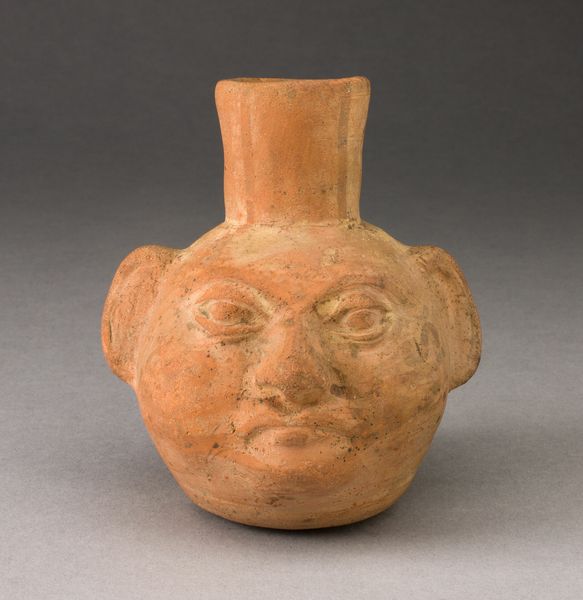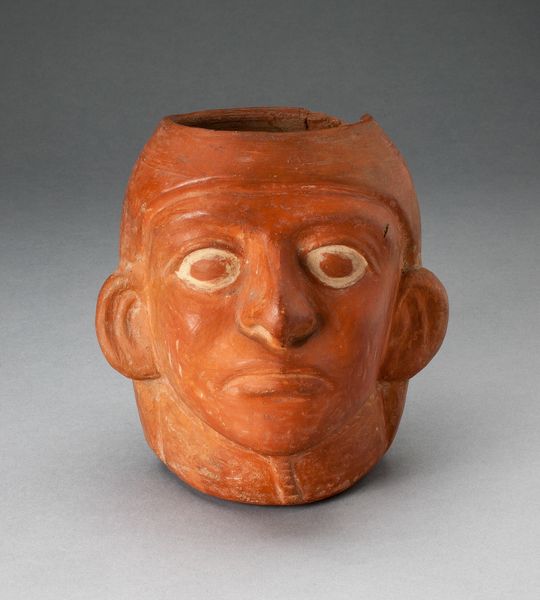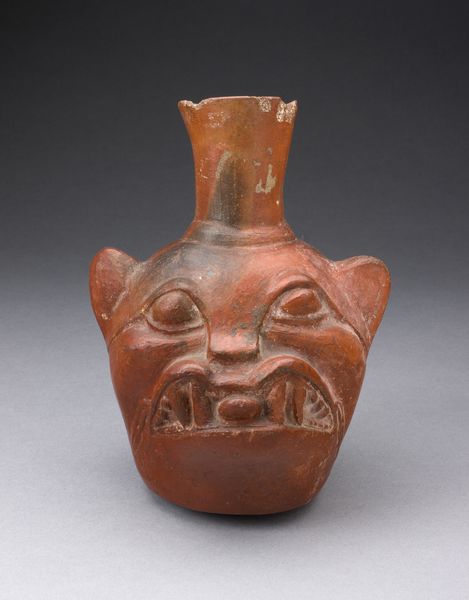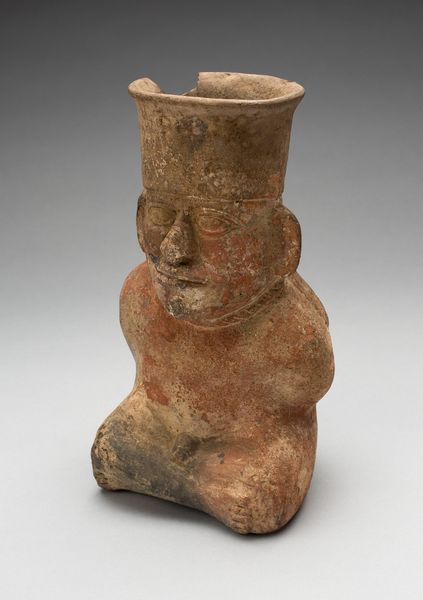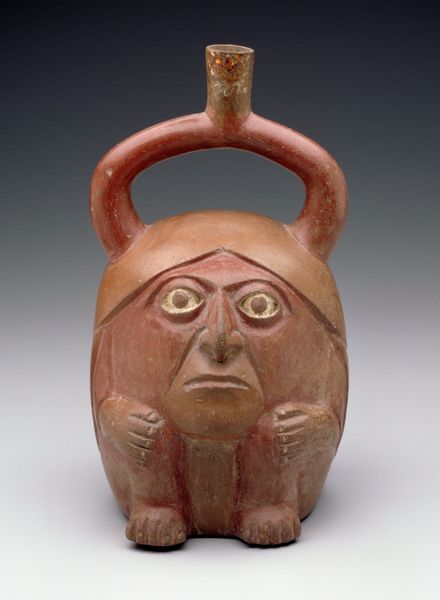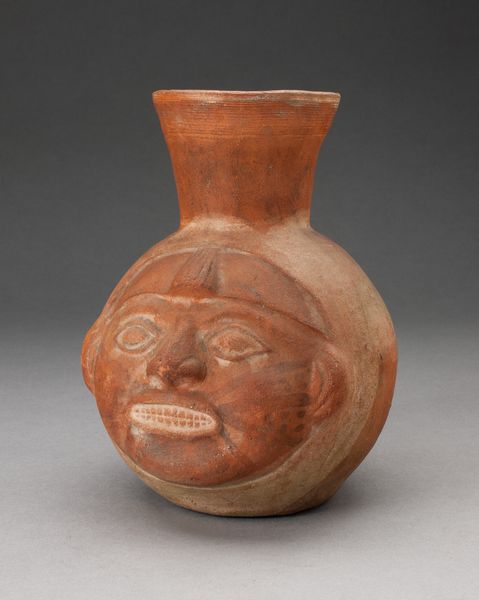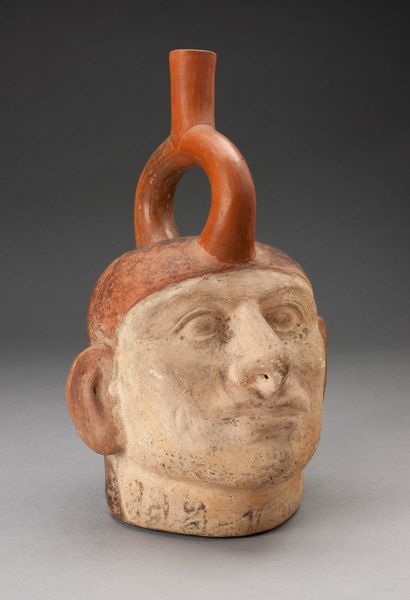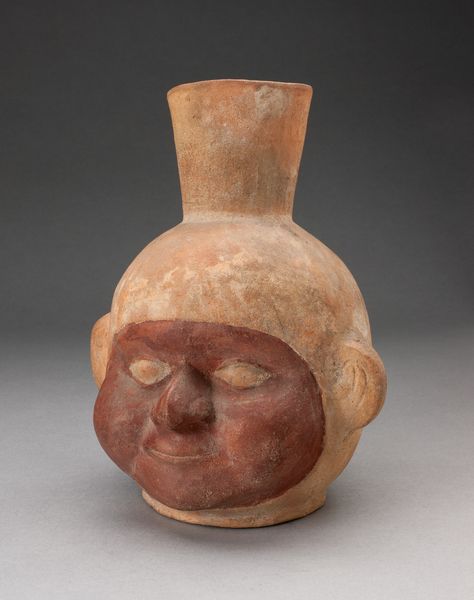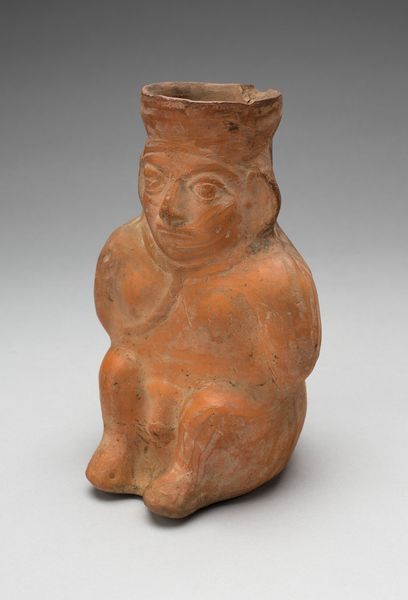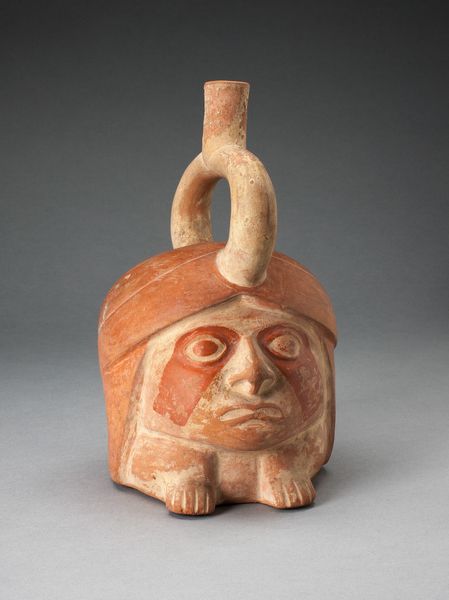
ceramic, terracotta
#
portrait
#
ceramic
#
figuration
#
terracotta
#
indigenous-americas
Dimensions: H. 11.8 cm (4 5/8 in.)
Copyright: Public Domain
Editor: We're looking at a ceramic piece called "Vessel in the Form of a Human Head," created by the Moche people, sometime between 100 and 500 AD. It's such a compelling object. The face seems both familiar and incredibly ancient. How do you interpret the symbolism embedded in a piece like this? Curator: It's more than a portrait; it’s a deliberate act of preserving or perhaps transforming identity. Consider the vessel form itself. What does it mean to contain something – water, perhaps, or offerings – within a representation of a human head? Editor: It’s like the person becomes a sacred container... Curator: Precisely! The face is rendered with a kind of stylized realism. The eyes, nose, mouth… these are clearly individual features, yet they are also archetypes. What emotional register do you read in them? Serenity? Resignation? Editor: I see a quiet intensity, a weight of responsibility perhaps. Curator: That’s interesting, especially in light of the function. Remember that among the Moche, portrait vessels weren't simple likenesses; they were believed to embody the spirit and essence of the individual. Using a pot like this for rituals connects it to the person that is pictured on it. Editor: So it’s not just art, but also ancestor worship. I hadn't considered how literal that could be, a tangible connection. Curator: Exactly. By engaging with it, we too become connected to that past, those beliefs. These symbols are how cultures remember and transmit values, even millennia later. Editor: It’s amazing to think that an object like this can hold so much meaning and history. Thank you for helping me unpack that.
Comments
No comments
Be the first to comment and join the conversation on the ultimate creative platform.
